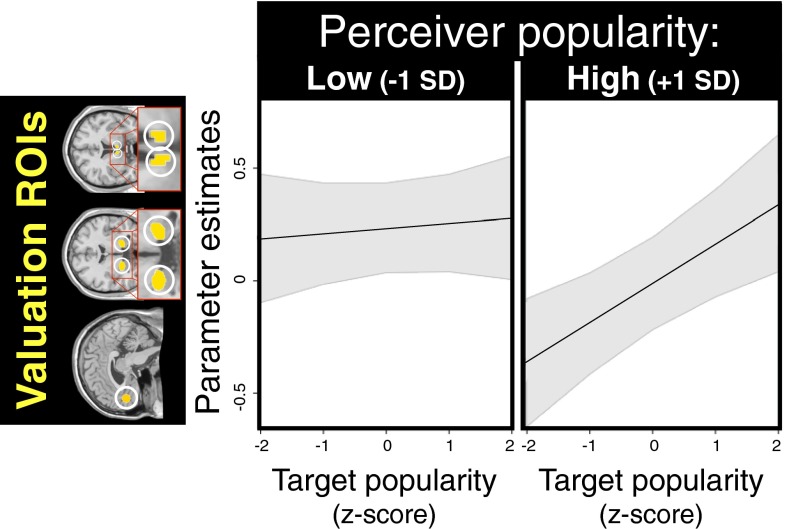Fig. 4.
Interaction plot depicting popular (+1 SD, relative to −1 SD unpopular) perceivers’ enhanced attunement to group members’ status differences (shaded area represents 95% confidence interval). The main effect of target popularity on valuation activity (P < 0.01) was amplified for more popular perceivers (P < 0.05), suggesting their valuation systems were more sensitively calibrated to detecting status differences among group members. In contrast, there was a nonsignificant main effect trend of perceiver popularity in the opposite (i.e., negative) direction (P = 0.13), suggesting the valuation systems of unpopular individuals demonstrate greater generalized interpersonal responsiveness (i.e., elevated responses to all group members regardless of status). Additional details provided in Results and SI Text.

